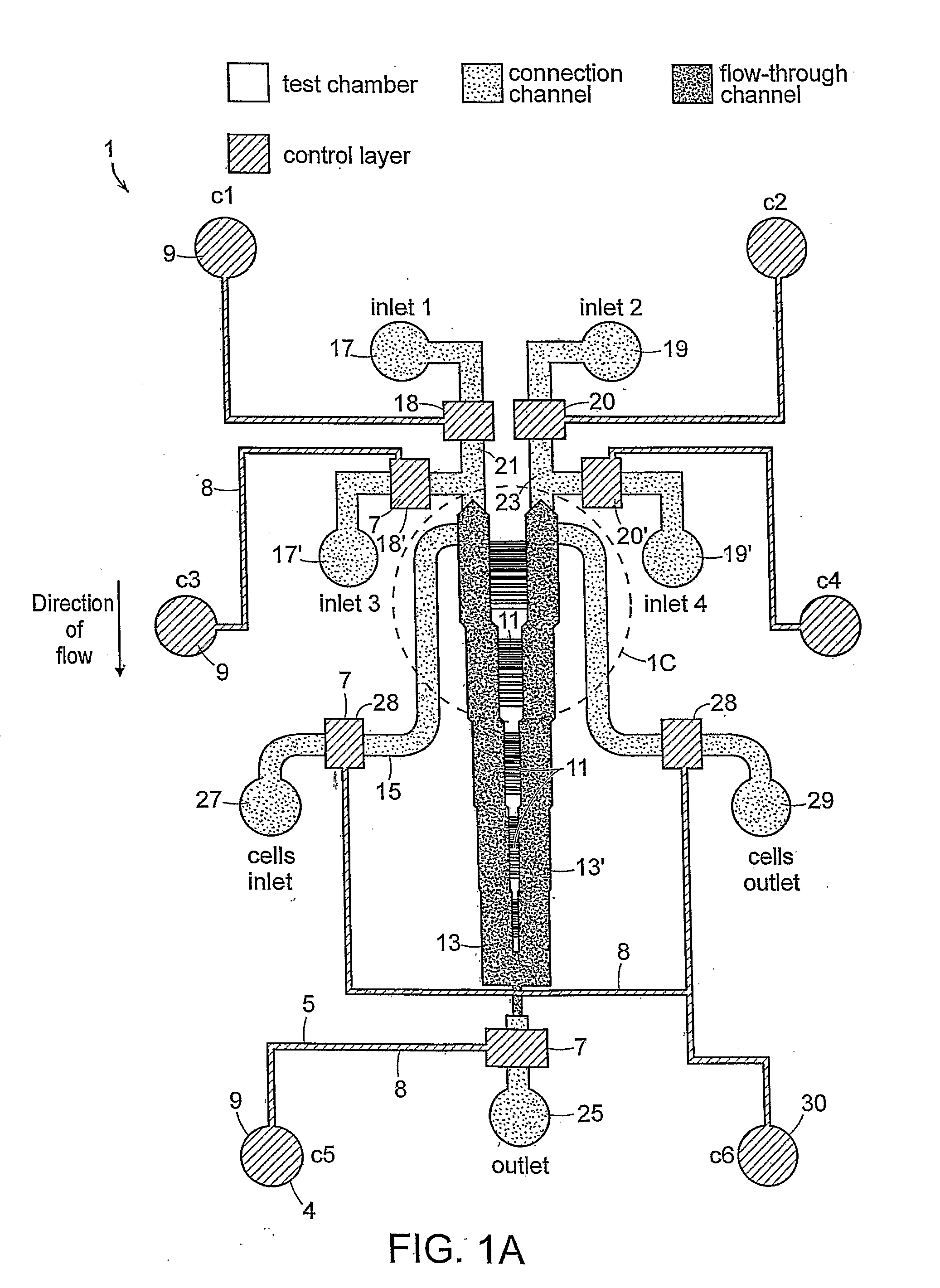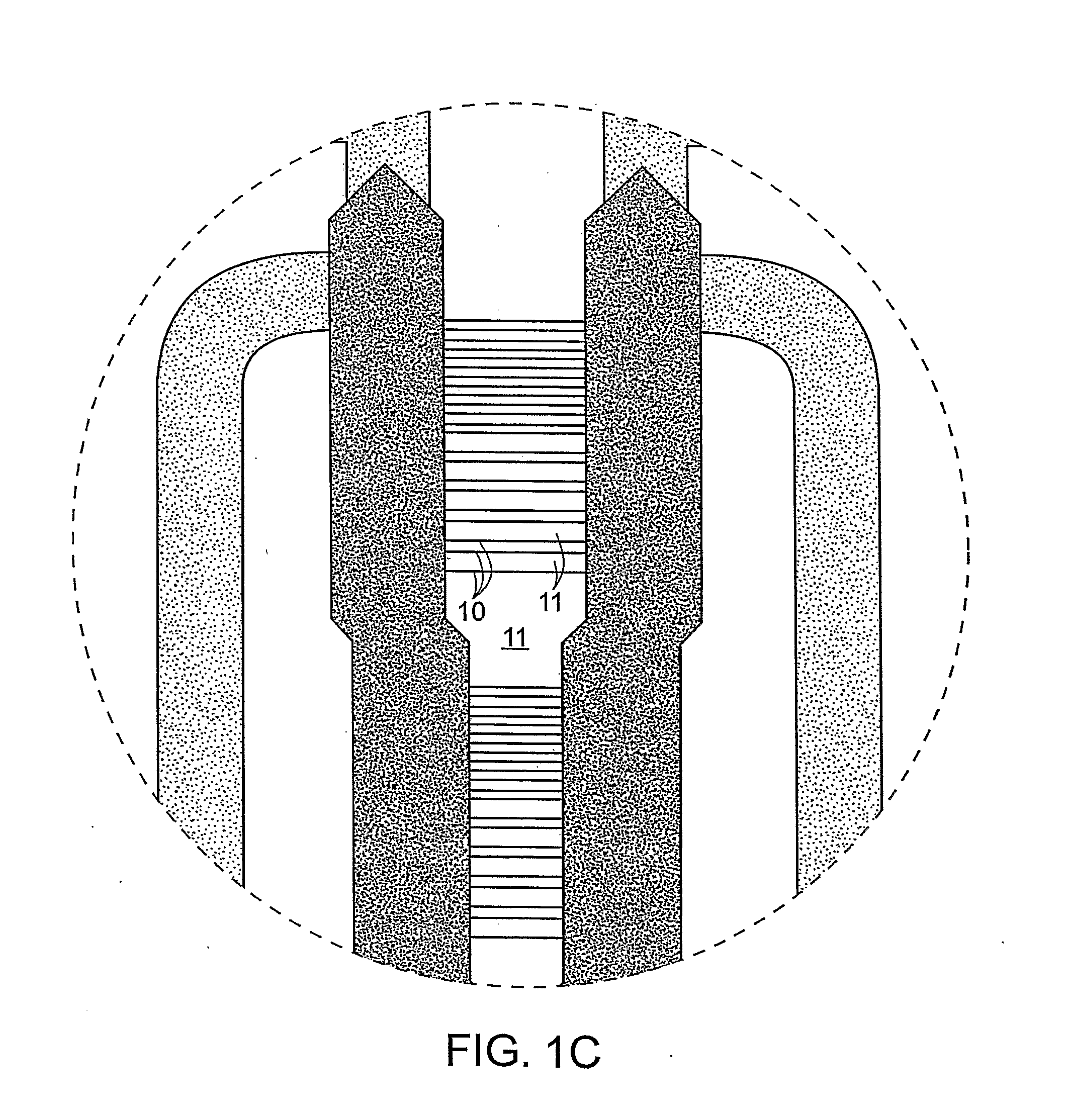Microfluidic device for high-throughput cellular gradient and dose response studies
a microfluidic device and cellular gradient technology, applied in the field of microfluidic devices for high-throughput cellular gradient and dose response studies, can solve the problems of unstable and reproducible gradient formation, non-adherent cell method, artifacts and skewing, etc., and achieve the effect of improving the sealing of the fluid channel
- Summary
- Abstract
- Description
- Claims
- Application Information
AI Technical Summary
Benefits of technology
Problems solved by technology
Method used
Image
Examples
example 1
Fabrication of a Device for Formation of Stable Gradients and Cell Imaging
[0055]The device was made using standard soft lithography techniques. The method of fabrication of the device is not a limitation of the invention.
[0056]Elastomeric devices have been developed for use in biological studies (for review see Xia and Whitesides 2003. Electrophoresis 24:3563-3576). Such devices can be biocompatible and can be prepared relatively easily and inexpensively by methods well known to those skilled in the art (See e.g., reviews Whitesides et al., 2001. Ann. Rev. Biomed. Eng. 3:335-373, incorporated herein by reference). Elastomeric devices made by the process of soft lithography are produced by casting of polydimethylsulfoxide (PDMS) or other silicone rubber onto micromachined molds or coated silicone wafers patterned using contact lithography, however, other materials and methods can be used.
[0057]Briefly, the fluid and control layers were separately printed at about 100% scale at high r...
example 2
Analysis of Response of A-Type Yeast to Exposure to a Gradient of Alpha-Factor Demonstrated Multi-Stability in Underlying Gene Regulation in Pheromone Response
[0061]Using a device of the invention such as that shown in FIG. 1, analysis of phenotypic dose response in single cells was performed. Yeast cells were grown in YPD media to mid-log phase, and concentrated 10-fold before loading into syringes. The maximum pheromone concentrations used in the experiments was typically 75-100 nM, with varying minimum and maximum ranges for specific experiments. Pheromone diffusion was estimated by fluorescence imaging of the diffusion of Alexa Fluor dye 555 Hydrozide (Molecular Probes), with the MW of approximately 1150 Da (cf. 1684 Da MW of the α-factor), which was used at the concentration of 5 μM. Solutions of cells, pheromone and dye were put into modified 1 ml syringes, to which external air pressures could be applied. The syringes were connected to Tygon tubing (Cole Parmer, ID 0.02″) cap...
PUM
| Property | Measurement | Unit |
|---|---|---|
| depth | aaaaa | aaaaa |
| depth | aaaaa | aaaaa |
| thick | aaaaa | aaaaa |
Abstract
Description
Claims
Application Information
 Login to View More
Login to View More - R&D
- Intellectual Property
- Life Sciences
- Materials
- Tech Scout
- Unparalleled Data Quality
- Higher Quality Content
- 60% Fewer Hallucinations
Browse by: Latest US Patents, China's latest patents, Technical Efficacy Thesaurus, Application Domain, Technology Topic, Popular Technical Reports.
© 2025 PatSnap. All rights reserved.Legal|Privacy policy|Modern Slavery Act Transparency Statement|Sitemap|About US| Contact US: help@patsnap.com



